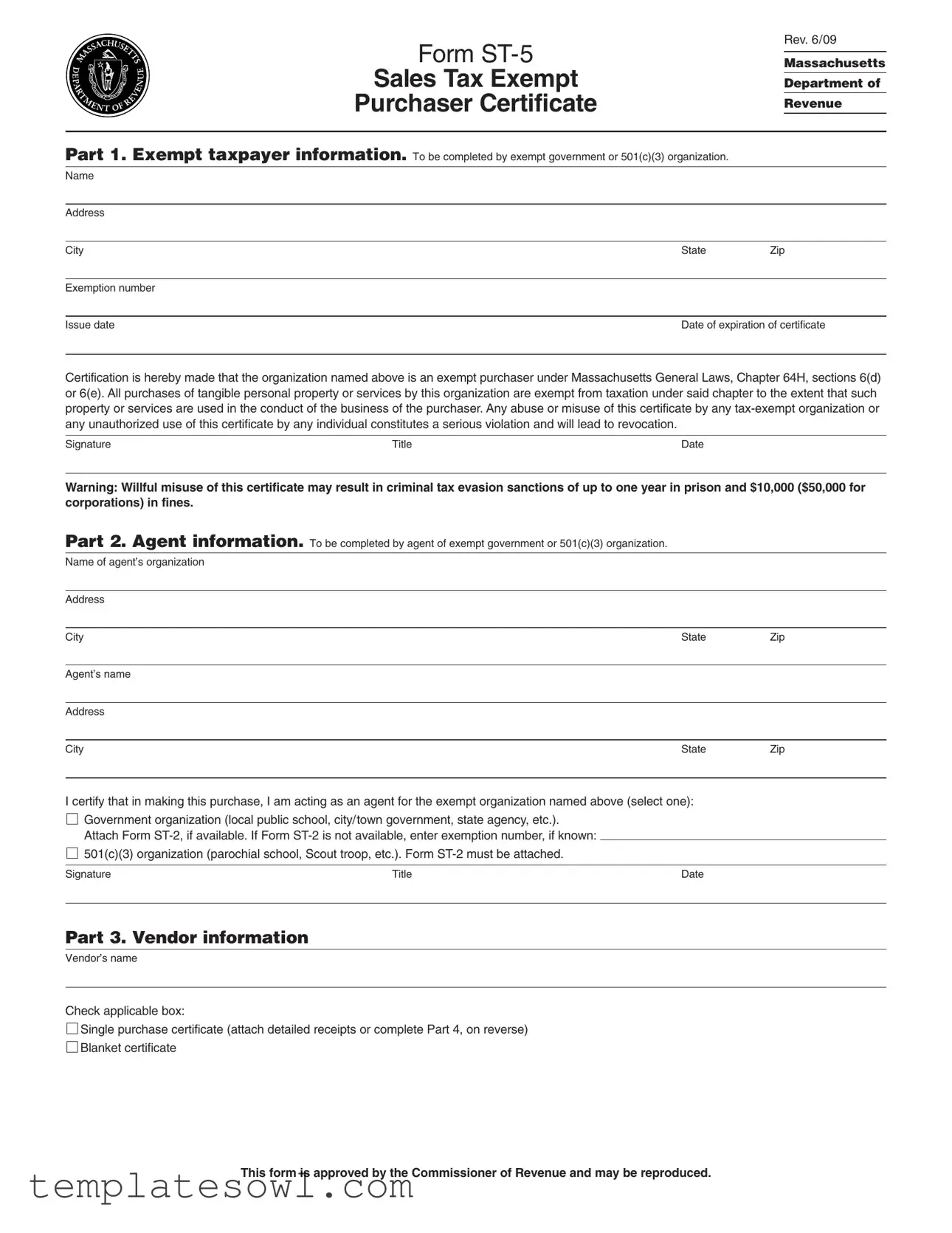Misconception 1: Only charities can use the ST-5 form.
This form is not limited to 501(c)(3) charities. Government organizations can also use it to make tax-exempt purchases. Both types of organizations need to adhere to specific guidelines.
Misconception 2: The ST-5 form does not require any supporting documents.
To use the ST-5, organizations must often provide Form ST-2 as proof of their tax-exempt status. Without this form, the ST-5 may not be honored.
Misconception 3: Anyone can fill out the ST-5 form.
The form must be completed by an authorized representative of the exempt organization or their designated agent. This is important for validating the tax-exempt status during purchases.
Misconception 4: Once the ST-5 is submitted, it does not expire.
The ST-5 is valid only for a certain period. Vendors need to verify the expiration date to ensure compliance with tax regulations.
Misconception 5: The ST-5 can be used for all types of purchases.
The ST-5 is intended for tangible personal property and specific services that relate to the organization's exempt activities. It cannot be used for personal purchases or unrelated services.
Misconception 6: The ST-5 form is optional for eligible organizations.
Organizations claiming tax-exempt status must utilize the ST-5 form to avoid paying sales tax. Not using this form could result in unnecessary tax liability.
Misconception 7: There are no penalties for misusing the ST-5 form.
Misuse of the certificate is taken seriously. Any fraudulent use can lead to severe penalties, including fines and possible imprisonment.
Misconception 8: Vendors are responsible for verifying exemption status.
While vendors must check the expiration date, the responsibility to provide proof of exemption primarily lies with the purchasing organization. Adequate documentation must be presented at the time of sale.



 Single purchase certificate (attach detailed receipts or complete Part 4, on reverse)
Single purchase certificate (attach detailed receipts or complete Part 4, on reverse)
 Blanket certificate
Blanket certificate